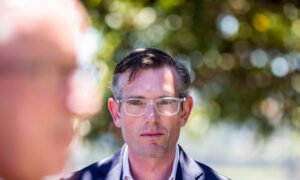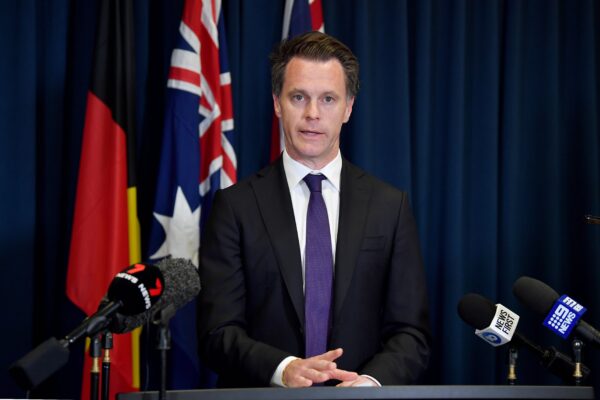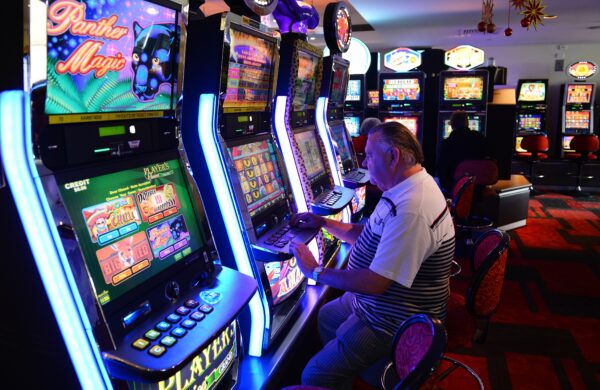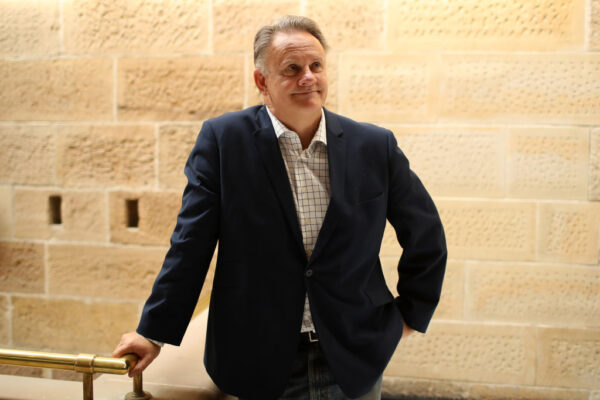Last Major Liberal Stronghold Set to Topple
Commentary At the moment it is almost certain the centre-right Liberal-National Coalition will lose this month’s New South Wales state election. The question is what party or combination of parties will form the next government. There are a lot of factors at work. The Coalition has now been in power for 12 years, longer than any previous Coalition government (although not as long as some previous Labor administrations). Electors think it is time for a change. Their 12 years has not been without drama. There have been four premiers, but two of them—Barry O’Farrell and Gladys Berejiklian—left as a result of scandals, and Mike Baird resigned abruptly, not two years after winning the 2015 election. Dominic Perrottet became premier on the resignation of Berejiklian on Oct. 21. While the party originally won office in an unprecedented landslide, it leaked votes at each election and suffered defections to the crossbench to the point where it is now a minority government. The previous Labor administration was in office for 16 years, and when it lost under Kristina Keneally, it was fatally tainted by corruption. But that was 12 years ago, and the Liberals have some of their own propriety issues to deal with. Polling shows Premier Perrottet is preferred as leader over Opposition Leader Chris Minns. Perrottet is a free-market, socially conservative Catholic from the right of the party who forged an internal coalition with the “moderate” or left-wing faction to gain the premiership, giving him Matt Kean as his Deputy. He has governed more from the centre than expected, which has surprised electors on the left and the right. This softened antagonism to him from left-wing inner-city voters, but at the price of alienating working-class and traditionalist outer-city voters. Minor parties like One Nation will try to capitalise on this. NSW Labor Leader Chris Minns speaks to media the during a press conference at NSW Parliament, Sydney, Australia, on Sept. 23, 2022. (AAP Image/Bianca De Marchi) Minns is also a conservative Catholic, whose background includes a stint as a firefighter, as well as a political advisor and city councillor. He’s only been a leader since June 2021 and has made a limited impact on the public. Minns has been running a small target strategy on the assumption that the Liberals can lose the election on their own. Not Much Difference Between the Two The top issues this election are housing affordability, climate change, infrastructure, funding of schools and hospitals, energy, and gaming. There is little substantive difference between the parties on housing affordability—they both see increasing supply as the answer. On climate change, while the rhetoric is slightly different, both sides are heavily invested in renewables with the government boasting of building the largest battery in the southern hemisphere. Over the last 12 years, the government has privatised around $55 billion of assets and is ploughing the proceeds into improved infrastructure. Some voters like this, while other voters complain about privatisation and blame it for increased costs in areas like electricity. Other voters believe the expenditure is concentrated too much on Sydney. However, these are past regrets, and there is little left to privatise, so privatisation is not going to move a lot of votes. With the money in the bank, either side can now spend big on infrastructure, and also make promises about schools, hospitals, and energy. There is one minor issue with little traction—gaming and laundering of money through casinos and clubs. A retiree plays electronic poker machines at the Randwick Labor Club in Sydney, Australia, on Dec. 21, 2012. (William West/AFP via Getty Images) The Liberals are ahead on this issue at the moment, proposing a cashless debit card, but Labor has plans of its own. So, the washup is that there is little difference between the parties on issues, with the state being run on a centre-left consensus, with the exception of privatisation. Which leaves the result to the vagaries of the campaign, and the electoral system. Where Labor Can Pull Ahead The two things that might make a difference here are Minns relative invisibility and One Nation. On our polling, 39 percent of our respondents neither approve, nor disapprove, of Minns’ performance. A campaign aimed at those voters could radically change voting intentions, particularly if voters don’t see a lot at risk from either party. One Nation figures because New South Wales uses an optional preferential system where you can allocate your preferences, or you can just vote 1 and not allocate any of your preferences, or only some of them. In 2019, election 53 percent of voters did not preference. The least likely to preference was One Nation, and the most likely, the Greens. With Perrottet having disappointed some of his nationalist supporters, One Nation and other minor parties will be a significant force as a refuge for disap

Commentary
At the moment it is almost certain the centre-right Liberal-National Coalition will lose this month’s New South Wales state election. The question is what party or combination of parties will form the next government.
There are a lot of factors at work.
The Coalition has now been in power for 12 years, longer than any previous Coalition government (although not as long as some previous Labor administrations). Electors think it is time for a change.
Their 12 years has not been without drama. There have been four premiers, but two of them—Barry O’Farrell and Gladys Berejiklian—left as a result of scandals, and Mike Baird resigned abruptly, not two years after winning the 2015 election.
Dominic Perrottet became premier on the resignation of Berejiklian on Oct. 21.
While the party originally won office in an unprecedented landslide, it leaked votes at each election and suffered defections to the crossbench to the point where it is now a minority government.
The previous Labor administration was in office for 16 years, and when it lost under Kristina Keneally, it was fatally tainted by corruption.
But that was 12 years ago, and the Liberals have some of their own propriety issues to deal with.
Polling shows Premier Perrottet is preferred as leader over Opposition Leader Chris Minns.
Perrottet is a free-market, socially conservative Catholic from the right of the party who forged an internal coalition with the “moderate” or left-wing faction to gain the premiership, giving him Matt Kean as his Deputy.
He has governed more from the centre than expected, which has surprised electors on the left and the right. This softened antagonism to him from left-wing inner-city voters, but at the price of alienating working-class and traditionalist outer-city voters.
Minor parties like One Nation will try to capitalise on this.

Minns is also a conservative Catholic, whose background includes a stint as a firefighter, as well as a political advisor and city councillor. He’s only been a leader since June 2021 and has made a limited impact on the public.
Minns has been running a small target strategy on the assumption that the Liberals can lose the election on their own.
Not Much Difference Between the Two
The top issues this election are housing affordability, climate change, infrastructure, funding of schools and hospitals, energy, and gaming.
There is little substantive difference between the parties on housing affordability—they both see increasing supply as the answer. On climate change, while the rhetoric is slightly different, both sides are heavily invested in renewables with the government boasting of building the largest battery in the southern hemisphere.
Over the last 12 years, the government has privatised around $55 billion of assets and is ploughing the proceeds into improved infrastructure.
Some voters like this, while other voters complain about privatisation and blame it for increased costs in areas like electricity.
Other voters believe the expenditure is concentrated too much on Sydney.
However, these are past regrets, and there is little left to privatise, so privatisation is not going to move a lot of votes.
With the money in the bank, either side can now spend big on infrastructure, and also make promises about schools, hospitals, and energy.
There is one minor issue with little traction—gaming and laundering of money through casinos and clubs.

The Liberals are ahead on this issue at the moment, proposing a cashless debit card, but Labor has plans of its own.
So, the washup is that there is little difference between the parties on issues, with the state being run on a centre-left consensus, with the exception of privatisation.
Which leaves the result to the vagaries of the campaign, and the electoral system.
Where Labor Can Pull Ahead
The two things that might make a difference here are Minns relative invisibility and One Nation.
On our polling, 39 percent of our respondents neither approve, nor disapprove, of Minns’ performance. A campaign aimed at those voters could radically change voting intentions, particularly if voters don’t see a lot at risk from either party.
One Nation figures because New South Wales uses an optional preferential system where you can allocate your preferences, or you can just vote 1 and not allocate any of your preferences, or only some of them.
In 2019, election 53 percent of voters did not preference. The least likely to preference was One Nation, and the most likely, the Greens.
With Perrottet having disappointed some of his nationalist supporters, One Nation and other minor parties will be a significant force as a refuge for disappointed Coalition supporters, particularly in outer-suburban areas.

They will take preferences from the Libs and Nats, but won’t necessarily give them back. On the Labor side, the Greens will take some votes but will funnel them back to a much larger extent.
On the basis of the last election, Labor needs a first preference swing of around 6.2 percent to win the nine seats required for victory in the 93 seats parliament, but it could sneak in as a minority with five additional seats and a swing of 3.3 percent. Current seat numbers are Coalition 46, Labor 38, and nine on the crossbench (including three Greens).
And they could be helped by One Nation running in two of those seats.
For the Liberals to win they have to reverse the inertia of losing seats at every election, and then losing them during the course of government from defections for other reasons.
But, there is no sign they have a strategy to do that, so Labor is slightly in the lead.
Views expressed in this article are the opinions of the author and do not necessarily reflect the views of The Epoch Times.












